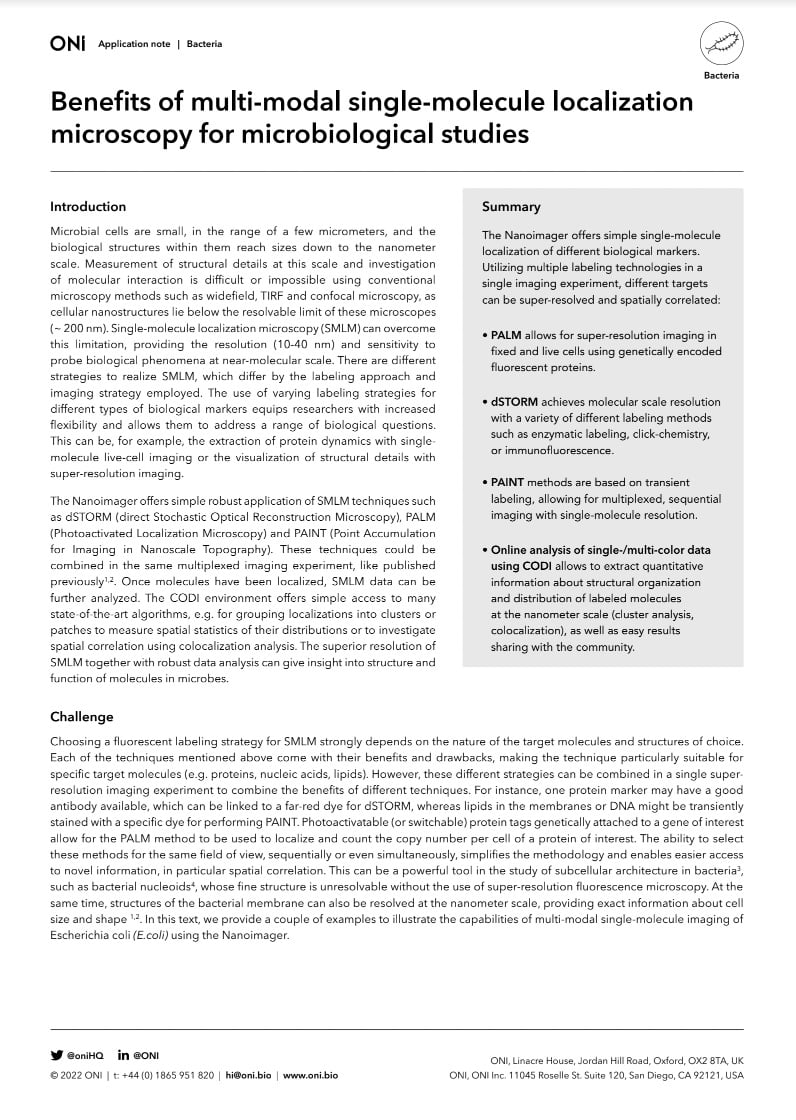In this App note we discuss how the measurement of structural details and investigation of molecular interaction of microbial cells at the nanometer scale is a challenge using conventional microscopy methods and how Single-molecule localization microscopy (SMLM) can overcome this limitation. There are different strategies to realize SMLM, which differ by the labeling approach and imaging strategy employed. These different strategies can be combined in a single super-resolution imaging experiment using the Nanoimager, which offers simple robust application of multiple SMLM techniques such as dSTORM, PALM and PAINT, equipping researchers with increased flexibility to address a range of biological questions.

The Nanoimager offers simple single-molecule
localization of different biological markers.
Utilizing multiple labeling technologies in a
single imaging experiment, different targets
can be super-resolved and spatially correlated:
• PALM allows for super-resolution imaging in
fixed and live cells using genetically encoded
fluorescent proteins.
• dSTORM achieves molecular scale resolution
with a variety of different labeling methods
such as enzymatic labeling, click-chemistry,
or immunofluorescence.
• PAINT methods are based on transient
labeling, allowing for multiplexed, sequential
imaging with single-molecule resolution.
• Online analysis of single-/multi-color data
using CODI allows to extract quantitative
information about structural organization
and distribution of labeled molecules
at the nanometer scale (cluster analysis,
colocalization), as well as easy results
sharing with the community.